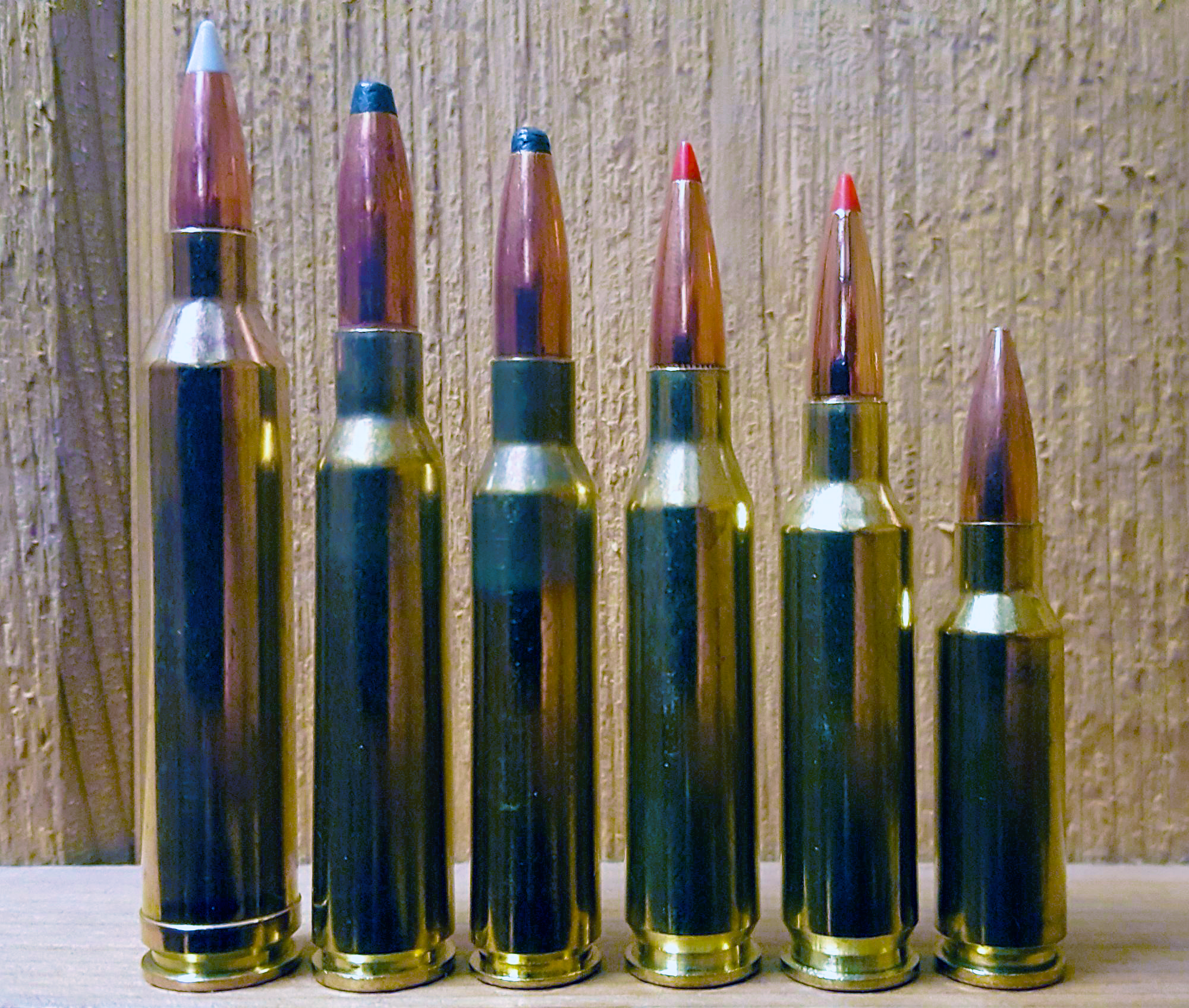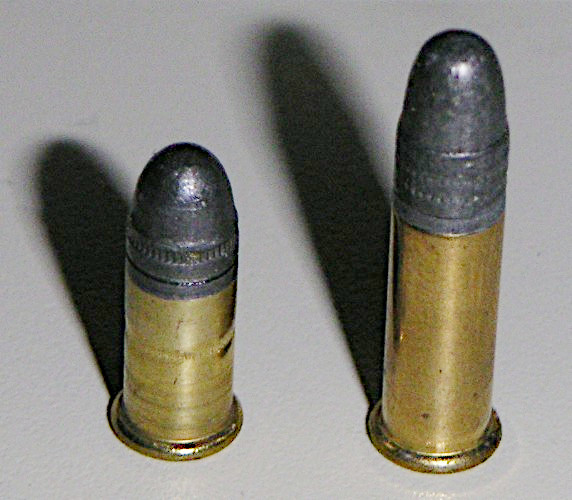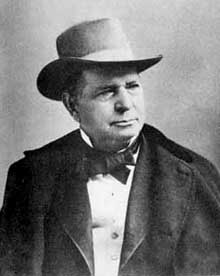|
.218 Bee
The .218 Bee / 5.7x34mmR is a .22 caliber centerfire rifle cartridge designed for varmint hunting by Winchester in 1937. The cartridge was originally chambered in the Winchester Model 65 lever-action rifles, which may have ultimately led to its lack of popularity. The cartridge is named for the bore diameter of the barrel in which the cartridge is chambered rather than the usual practice in the United States of having the cartridge's nomenclature reflect in some way the bullet diameter. History The .218 Bee cartridge was designed by Winchester for use in their Model 65 lever-action rifles. Winchester designed the cartridge by necking down the .25-20 Winchester cartridge to accept a .224 diameter bullet. Just as the .32-20 can be considered to be the parent cartridge of the .25-20, it can also be considered the parent cartridge to the .218 Bee. The cartridge was introduced as a commercial cartridge by Winchester in 1937 in their Model 65 lever action rifle, which was also chamb ... [...More Info...] [...Related Items...] OR: [Wikipedia] [Google] [Baidu] [Amazon] |
223 Remington
The .223 Remington designated 223 Remington by Sporting Arms and Ammunition Manufacturers' Institute, SAAMI and 223 Rem. by the Commission internationale permanente pour l'épreuve des armes à feu portatives, C.I.P., (pronounced "two-two-three") is a rimless, bottlenecked, centerfire ammunition, centerfire Intermediate cartridge, intermediate cartridge (firearms), cartridge. It was developed in 1957 by Remington Arms and Fairchild Industries for the United States Army Forces Command, U.S. Continental Army Command of the United States Army as part of a project to create a small-caliber, high-velocity firearm. The .223 Remington is considered one of the most popular common-use cartridges and is used by a wide range of Semi-automatic rifle, semi-automatic and manual-action rifles. History The development of the Cartridge (firearms), cartridge, which eventually became the .223 Remington, was linked to the development of a new lightweight combat rifle. The cartridge and rifle were ... [...More Info...] [...Related Items...] OR: [Wikipedia] [Google] [Baidu] [Amazon] |
Bolt-action
Bolt action is a type of manual Action (firearms), firearm action that is operated by ''directly'' manipulating the bolt (firearms), turn-bolt via a cocking handle, bolt handle, most commonly placed on the right-hand side of the firearm (as most users are right-handed). The majority of bolt-action firearms are rifles, but there are also some variants of shotguns and handguns that are bolt-action. Bolt action firearms are generally repeating firearms, but many single-shot designs are available particularly in shooting sports where single-shot firearms are mandated, such as most Olympic and International Shooting Sport Federation, ISSF rifle disciplines. From the late 19th century all the way through both World Wars, bolt action rifles were the standard infantry service rifle, service weapons for most of the world's military forces, with the exception of the United States Armed Forces, who used the M1 Garand Semi-automatic rifle. In modern military and law enforcement after ... [...More Info...] [...Related Items...] OR: [Wikipedia] [Google] [Baidu] [Amazon] |
Pistol And Rifle Cartridges
A pistol is a type of handgun, characterised by a barrel with an integral chamber. The word "pistol" derives from the Middle French ''pistolet'' (), meaning a small gun or knife, and first appeared in the English language when early handguns were produced in Europe. In colloquial usage, the word "pistol" is often used as a generic term to describe ''any'' type of handgun, inclusive of revolvers (which have a single barrel and a separate cylinder housing multiple chambers) and the pocket-sized derringers (which are often multi-barrelled). The most common type of pistol used in the contemporary era is the semi-automatic pistol. The older single-shot and lever-action pistols are now rarely seen and used primarily for nostalgic hunting and historical reenactment. Fully-automatic machine pistols are uncommon in civilian usage because of their generally poor recoil-controllability (due to the lack of a buttstock) and strict laws and regulations governing their manufactur ... [...More Info...] [...Related Items...] OR: [Wikipedia] [Google] [Baidu] [Amazon] |
Table Of Handgun And Rifle Cartridges
This is a table of selected pistol/submachine gun and rifle/machine gun cartridges by common name. Data values are the highest found for the cartridge, and might not occur in the same load (e.g. the highest muzzle energy might not be in the same load as the highest muzzle velocity, since the bullet weights can differ between loads). Legend * Factory loadings. Number of manufacturers producing complete cartridges - e.g. Norma, RWS, Hornady, Winchester, Federal, Remington, Sellier & Bellot, Prvi Partizan. May be none for obsolete and wildcat cartridges. * H/R: Handgun (H) or rifle (R) - dominant usage of the cartridge (although several dual-purpose cartridges exist) * Size: Metric size - may not be official * MV: Muzzle velocity, in feet-per-second * ME: Muzzle energy, in foot-pounds * P: Momentum, in pound (force) (lbf) times seconds. A guide to the recoil from the cartridge, and an indicator of bullet penetration potential. The .30-06 Springfield (at 2.064 lbf-s) is cons ... [...More Info...] [...Related Items...] OR: [Wikipedia] [Google] [Baidu] [Amazon] |
List Of Rimmed Cartridges
Below is a list of rimmed cartridges (R). Although similar, rimmed cartridges differ from rimfire cartridges (list). A rimmed cartridge is a cartridge with a rim, whose primer is located in the center of the case head; the primer is detonated by the firing pin striking that center location. A rimfire cartridge also has a rim, but the primer is located around the rim; the primer is detonated by striking the rim. Handgun and Carbine * .22 Hornet * .22 Remington Jet * .32 S&W Long * .38 S&W * .38 Special * .357 Magnum * .38-40 Winchester * .41 Short Colt * .41 Long Colt * .41 Special * .41 Magnum * .44 Remington Centerfire * .44 Russian * .44 S&W American * .44 Special * .44 Magnum * .44-40 Winchester * .45 Colt * .45 Auto Rim * .45 Schofield * .454 Casull * .455 Webley * .475 Linebaugh * .500 Linebaugh * .500 S&W Special * .500 S&W Magnum * 7.62×38mmR * 8mm Gasser * 9mm Japanese revolver * 10.4mm Swiss Centerfire * 10.6×25mmR * 11.3×36mmR Shotgun *2 bore * 4 bore * 6 bore * 8 b ... [...More Info...] [...Related Items...] OR: [Wikipedia] [Google] [Baidu] [Amazon] |
List Of Rifle Cartridges
List of rifle cartridges, by primer type, Caliber, calibre and name. File:Cartridge Sample 2.jpg, 350px, From left to right: 1 .17 Hornady Mach 2, 2 .17 Hornady Magnum Rimfire, 3 .22 Long Rifle, 4 .22 Winchester Magnum Rimfire, 5 .17/23 SMc, 6 5mm/35 SMc, 7 .22 Hornet, 8 .223 Remington, 9 .223 WSSM, 10 .243 Winchester, 11 .243 Winchester, .243 Winchester Improved (Ackley), 12 .25-06 Remington, 13 .270 Winchester, 14 .308 Winchester, 15 .30-06 Springfield, 16 .45-70 Government, 17 .50-90 Sharps rect 54 345 101 556 .17 Hornady Mach 2 rect 110 296 153 556 .17 Hornady Magnum Rimfire rect 159 341 207 556 .22 Long Rifle rect 211 294 265 556 .22 Winchester Magnum Rimfire rect 271 221 341 556 .17/23 SMc rect 345 186 432 556 5 mm/35 SMc rect 441 225 513 556 .22 Hornet rect 521 151 602 556 .223 Remington rect 610 134 724 556 .223 Winchester Super Short Magnum rect 732 95 832 556 .243 Winchester rect 838 85 929 556 .243 Winchester, .243 Winchester Improved (Ackley) rect 937 23 1030 556 .25-06 ... [...More Info...] [...Related Items...] OR: [Wikipedia] [Google] [Baidu] [Amazon] |
5 Mm Caliber
This is a list of firearm cartridges which have bullets in the caliber range. *''Length'' refers to the cartridge case Case or CASE may refer to: Instances * Instantiation (other), a realization of a concept, theme, or design * Special case, an instance that differs in a certain way from others of the type Containers * Case (goods), a package of relate ... length. *''OAL'' refers to the overall length of the cartridge. All measurements are in mm (in). Rimfire cartridges Pistol cartridges Revolver cartridges Rifle cartridges See also * .22 caliber References {{DEFAULTSORT:5 Mm Caliber Pistol and rifle cartridges ... [...More Info...] [...Related Items...] OR: [Wikipedia] [Google] [Baidu] [Amazon] |
22 Hornet
The .22 Hornet or 5.6×36mmR Hornet is a varminting, game (hunting), small-game hunting, survival skills, survival and competition centerfire rifle cartridge commercially introduced in 1930. It is considerably more powerful than either the .22 WMR and the .17 HMR rimfire ammunition, rimfire cartridges, achieving a higher velocity with a bullet twice the weight of that used in the .17 HMR. The Hornet also differs significantly from these in that being a centerfire cartridge makes it Handloading, reloadable, and thus more versatile. It was also the smallest commercially available .22 caliber centerfire cartridge until the introduction of the FN 5.7×28mm. The .22 Hornet should not be confused with the 5.6x35mmR Vierling. As per C.I.P., the Hornet case has a longer shoulder length, case length and thicker rim than the Vierling. This makes it very difficult to chamber the higher pressure Hornet cartridge in a Vierling rifle. The .22 Hornet fills the gap between such popular Varm ... [...More Info...] [...Related Items...] OR: [Wikipedia] [Google] [Baidu] [Amazon] |
Winchester Repeating Arms Company
The Winchester Repeating Arms Company was a prominent American manufacturer of repeating firearms and ammunition. The firm was established in 1866 by Oliver Winchester and was located in New Haven, Connecticut. The firm went into receivership in 1931 and was bought by the Western Cartridge Company, a forerunner of the Olin Corporation. The Winchester brand name is still owned by the Olin Corporation, which makes ammunition under that name. The Winchester name is also used under license for firearms produced by two subsidiaries of the Herstal Group – FN Herstal of Belgium and the Browning Arms Company of Ogden, Utah. History Early history Predecessors The ancestor of the Winchester Repeating Arms Company was the Horace Smith and Daniel Wesson partnership of Norwich, Connecticut (not to be confused with the famous Smith & Wesson Revolver Company founded later by the same men). Smith and Wesson acquired Lewis Jennings' improved version of inventor Walter Hunt's 18 ... [...More Info...] [...Related Items...] OR: [Wikipedia] [Google] [Baidu] [Amazon] |
Lever-action
The toggle-link action used in the iconic Winchester Model 1873 rifle, one of the most famous lever-action firearms Picture showing a Volcanic Pistol A lever action is a type of action for repeating firearms that uses a manually operated cocking handle located around the trigger guard area (often incorporating it) that pivots forward to move the bolt via internal linkages, which will feed and extract cartridges into and out of the chamber, and cock the firing pin mechanism. This contrasts to other type of repeating actions such as the bolt-action, pump-action, semi-automatic, fully automatic, and/or burst mode actions. A firearm using this operating mechanism is colloquially referred to as a levergun. Most lever-action firearms are rifles, but some lever-action shotguns and a few pistols have been made. The Winchester Model 1873 rifle is one of the most famous lever-action firearms, but many manufacturers (notably Henry Repeating Arms and Marlin Firearms) also produce l ... [...More Info...] [...Related Items...] OR: [Wikipedia] [Google] [Baidu] [Amazon] |






